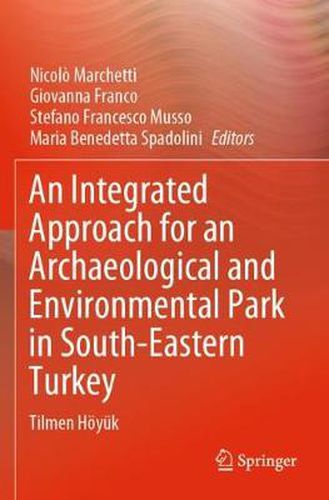Readings Newsletter
Become a Readings Member to make your shopping experience even easier.
Sign in or sign up for free!
You’re not far away from qualifying for FREE standard shipping within Australia
You’ve qualified for FREE standard shipping within Australia
The cart is loading…






This title is printed to order. This book may have been self-published. If so, we cannot guarantee the quality of the content. In the main most books will have gone through the editing process however some may not. We therefore suggest that you be aware of this before ordering this book. If in doubt check either the author or publisher’s details as we are unable to accept any returns unless they are faulty. Please contact us if you have any questions.
This book reports on a public archaeology project carried out at the ancient site of Tilmen Hoeyuk in south-eastern Turkey. The project developed and applied new methodologies and advanced technologies for the planning, design, conservation and management of an archaeological park at a site of high cultural, environmental and touristic interest, representing a significant study case for other archaeological sites in the Mediterranean area and beyond. It highlights state-of-the-art techniques of remote sensing, both for archaeological surveying and for territorial and environmental analysis through the study of high-definition aerial photos and digital photogrammetry. It also takes into account the ecological and environmental characterization data elaborated by environmental and botanic experts, fundamental for the purposes of eco-sustainability and management of the site, through climate and ground measurements aiming at vegetation control and a management model for the archaeological site itself and its green areas of outstanding naturalistic interest. Further, the book comprehensively discusses the analysis of the state of preservation of the archaeological remains and their effective conservation based on a set of measures guided by the principles of minimum intervention, feasibility and low impact on the remains, the site and its landscape. Moreover, it presents novel devices and fixed structures aimed at protecting the fragile archaeological remains and allowing safe access to visitors to the newly created archaeological park. At the intersection of archaeology, architecture and natural sciences, this book appeals to researchers and specialists in archaeology, social sciences, environmental sciences, conservation, architecture and engineering disciplines.
$9.00 standard shipping within Australia
FREE standard shipping within Australia for orders over $100.00
Express & International shipping calculated at checkout
This title is printed to order. This book may have been self-published. If so, we cannot guarantee the quality of the content. In the main most books will have gone through the editing process however some may not. We therefore suggest that you be aware of this before ordering this book. If in doubt check either the author or publisher’s details as we are unable to accept any returns unless they are faulty. Please contact us if you have any questions.
This book reports on a public archaeology project carried out at the ancient site of Tilmen Hoeyuk in south-eastern Turkey. The project developed and applied new methodologies and advanced technologies for the planning, design, conservation and management of an archaeological park at a site of high cultural, environmental and touristic interest, representing a significant study case for other archaeological sites in the Mediterranean area and beyond. It highlights state-of-the-art techniques of remote sensing, both for archaeological surveying and for territorial and environmental analysis through the study of high-definition aerial photos and digital photogrammetry. It also takes into account the ecological and environmental characterization data elaborated by environmental and botanic experts, fundamental for the purposes of eco-sustainability and management of the site, through climate and ground measurements aiming at vegetation control and a management model for the archaeological site itself and its green areas of outstanding naturalistic interest. Further, the book comprehensively discusses the analysis of the state of preservation of the archaeological remains and their effective conservation based on a set of measures guided by the principles of minimum intervention, feasibility and low impact on the remains, the site and its landscape. Moreover, it presents novel devices and fixed structures aimed at protecting the fragile archaeological remains and allowing safe access to visitors to the newly created archaeological park. At the intersection of archaeology, architecture and natural sciences, this book appeals to researchers and specialists in archaeology, social sciences, environmental sciences, conservation, architecture and engineering disciplines.